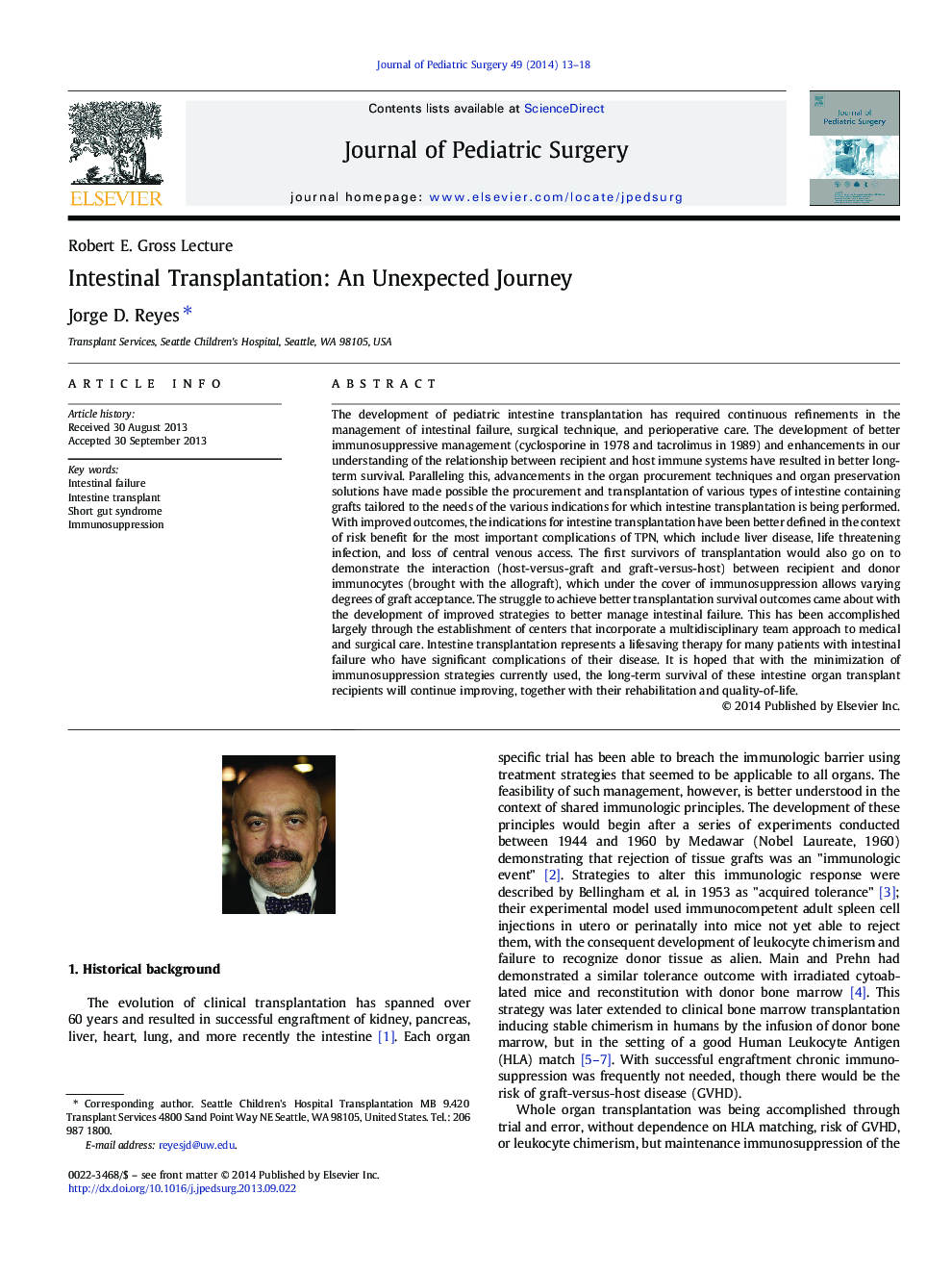| Article ID | Journal | Published Year | Pages | File Type |
|---|---|---|---|---|
| 4156049 | Journal of Pediatric Surgery | 2014 | 6 Pages |
The development of pediatric intestine transplantation has required continuous refinements in the management of intestinal failure, surgical technique, and perioperative care. The development of better immunosuppressive management (cyclosporine in 1978 and tacrolimus in 1989) and enhancements in our understanding of the relationship between recipient and host immune systems have resulted in better long-term survival. Paralleling this, advancements in the organ procurement techniques and organ preservation solutions have made possible the procurement and transplantation of various types of intestine containing grafts tailored to the needs of the various indications for which intestine transplantation is being performed.With improved outcomes, the indications for intestine transplantation have been better defined in the context of risk benefit for the most important complications of TPN, which include liver disease, life threatening infection, and loss of central venous access. The first survivors of transplantation would also go on to demonstrate the interaction (host-versus-graft and graft-versus-host) between recipient and donor immunocytes (brought with the allograft), which under the cover of immunosuppression allows varying degrees of graft acceptance. The struggle to achieve better transplantation survival outcomes came about with the development of improved strategies to better manage intestinal failure. This has been accomplished largely through the establishment of centers that incorporate a multidisciplinary team approach to medical and surgical care. Intestine transplantation represents a lifesaving therapy for many patients with intestinal failure who have significant complications of their disease. It is hoped that with the minimization of immunosuppression strategies currently used, the long-term survival of these intestine organ transplant recipients will continue improving, together with their rehabilitation and quality-of-life.
